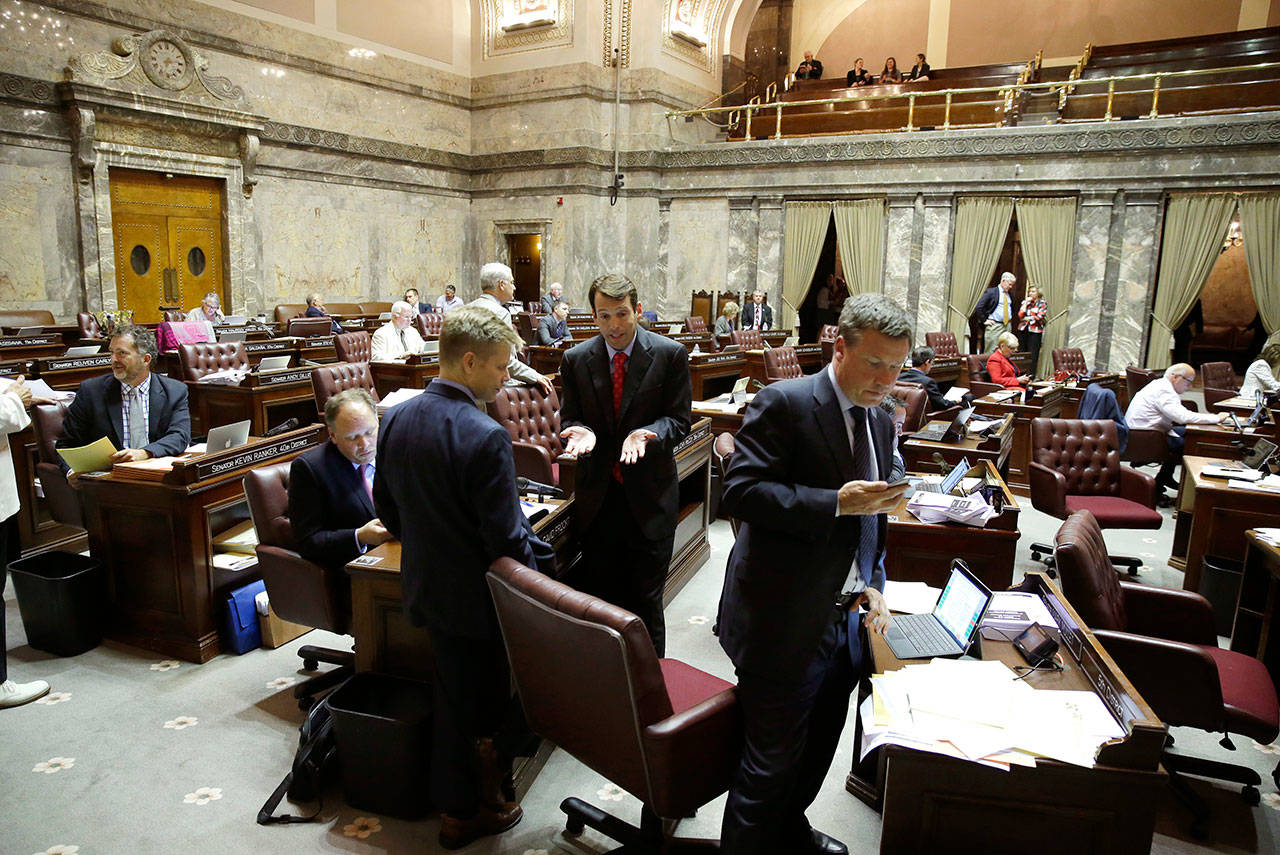By The Herald Editorial Board
Precautions sometimes can seem unnecessary, even tedious, until they prevent or limit loss, injury or worse.
It’s easy to see the value of a seat belt after a vehicle accident. A precaution’s value is less obvious when it prevents, for example, travelers from carrying firearms onto airliners. How do you know when such a restriction has made a difference? Still, very few of us would want to see that safety measure reversed.
The same logic applies to Lt. Gov. Cyrus Habib’s recent decision to expand the prohibition of openly carried firearms in the state Senate’s two galleries to include concealed weapons, even when the owner has a concealed-carry permit.
As reported by the Associated Press on Monday, Habib’s order does not extend to the Capitol’s committee rooms, where hearings are routinely open to the public. Nor does his order address the galleries of the House of Representatives. Habib, as the Senate’s presiding officer, cannot set policy for the House, which would have to make its own rules if it wants to follow suit.
“I don’t want us to be implementing this type of order the day after some type of tragedy,” Habib told the Associated Press. “I want to be doing it preemptively and in a way that’s respectful.”
Habib said the move wasn’t meant as a statement against the lawful ability of state residents to bear arms; it’s a recognition that for some locations, such as courthouses and other government buildings, safety precludes the possession of firearms.
Along with courthouses, firearms in Washington state are commonly not allowed in bars and taverns, public mental health facilities, restricted-access areas of airports and outdoor music festivals. They also can be banned within school grounds, child care centers and youth shelters.
While residents of Washington, D.C., have been able to obtain permits to carry concealed weapons since 2015, firearms are not allowed in or around the U.S. Capitol, unless carried by a member of Congress, a staffer acting on behalf of a lawmaker or by law enforcement.
Habib’s move drew criticism from some gun-rights groups, including from the Bellevue-based Citizens Committee for the Right to Keep and Bear Arms. Dave Workman, spokesman for the organization, objected that Habib was restricting the public’s access to view the work of the Senate.
“This looks like an attempt to keep some people out of the Senate galleries who never caused a problem before,” he told the Associated Press.
That’s a stretch that could pull a muscle.
Barring guns from the Senate viewing galleries won’t prevent the ability of the public to witness the work of lawmakers any more than barring firearms on commercial flights keeps gun owners from traveling by air.
The Legislature could consider installation of a Capitol facility that would allow gun owners to check their firearms. But even without going to that expense, gun owners can easily leave their firearms in a locked vehicle or leave them secured at home.
Gun owners are correct that the vast majority of those who own firearms shouldn’t be seen as a threat. And they aren’t. But it was the actions of a very few of their ranks who led legislators, including Republicans, to seek the removal of openly carried firearms from the galleries of both the House and Senate.
Shortly after the start of the 2015 legislative session, a gun rights rally on the Capitol grounds, where firearms were lawfully displayed, later spilled into into a House gallery, where protesters brought loaded firearms as they continued their protest. The Spokesman-Review reported that at least one person chambered a round, then ejected it onto the gallery floor.
Legislative rules have long barred protest signs on sticks in the Capitol building and “props that could be construed as an effort to promote demonstrations” in the galleries. The firearms, without doubt, were being used as props by protesters.
House Minority Leader Dan Kristiansen, R-Snohomish, told the Spokane paper that the change to bar openly carried firearms in the galleries became necessary “after a very, very few people stepped over the line.”
But all it takes is “a very, very few people” to make such precautions necessary.
It’s certain that lawmakers in House and Senate will be debating legislation related to gun safety this coming session. As those and other controversial debates take place on the floor of both chambers, it is not unreasonable to allow lawmakers to ensure that the public viewing galleries that look down on them don’t become shooting galleries.
Talk to us
> Give us your news tips.
> Send us a letter to the editor.
> More Herald contact information.

























